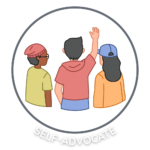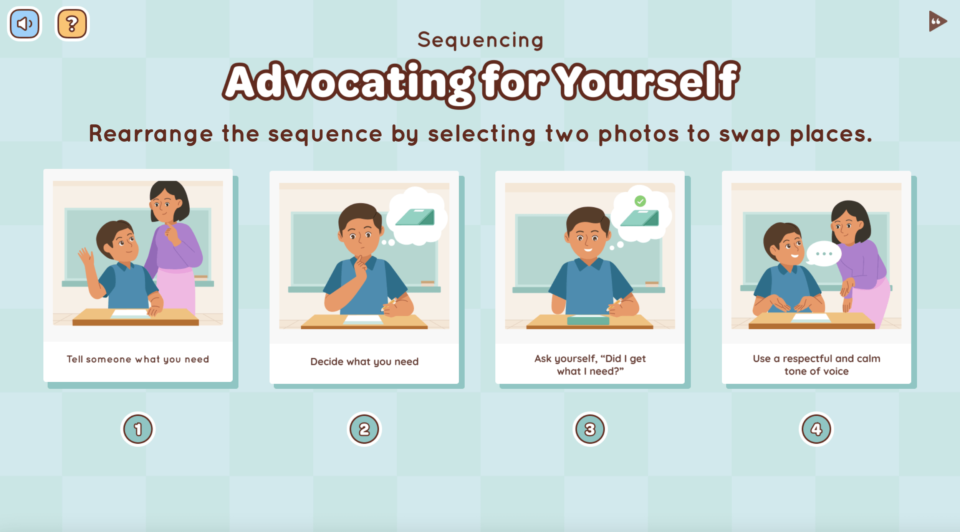
Every student has unique needs, strengths, and challenges. Teaching students to self-advocate is empowering and essential for their personal and academic growth. As special educators, we can play a crucial role in fostering this skill from an early age. Try out this free elementary self-advocacy sequencing activity and lesson from Everyday Speech in your next session.
The Power of Self-Advocacy
Understanding and asserting one’s needs can be transformative. Benefits of self-advocacy include:
- Building Confidence: Recognizing and voicing their needs helps boost self-worth.
- Improved Learning: Students can better express their learning preferences and requirements.
- Fostering Independence: Encourages proactive thinking and action.
Lesson Plan: Elementary Self-Advocacy
This simple and no-prep lesson plan is designed with elementary school students in mind. Engage them with the interactive breathing activity from Everyday Speech to ensure an enjoyable learning experience.
Objectives:
Introduce elementary students to the concept of self-advocacy and provide tools for effective expression of their needs.
Materials Needed:
Self-Advocacy Lesson Plan
- Introduction to Self-Advocacy (5 minutes)
- Initiate a discussion about what it means to speak up for oneself.
- Share examples of when someone might need to self-advocate.
- Everyday Speech Interactive Activity (15 minutes)
- Introduce the sample sequencing interactive activity from Everyday Speech.
- Guide students as they sequence the steps of effectively voicing their needs.
- Group Reflection and Discussion (10 minutes)
- Encourage students to share their experiences and feelings from the role-play.
- Discuss the importance of respect and understanding when someone is self-advocating.

Conclusion
Self-advocacy is an essential life skill that extends beyond classroom walls. By integrating these activities and lessons into the curriculum, special educators can arm their elementary students with the confidence and tools to navigate the world and voice their needs effectively.
Sample Video
Students learn best from watching real students their own age model skills. Try out this sample video-modeling lesson below. We offer our entire Social-Emotional Learning platform free for 30 days here!
Related Blog Posts:
Teaching Conflict Resolution and Problem Solving Skills to Special Education Students
Free Back to School Goal Poster on Confidence
Box Breathing: A Simple Technique to Help Students Regain Calm and Focus





